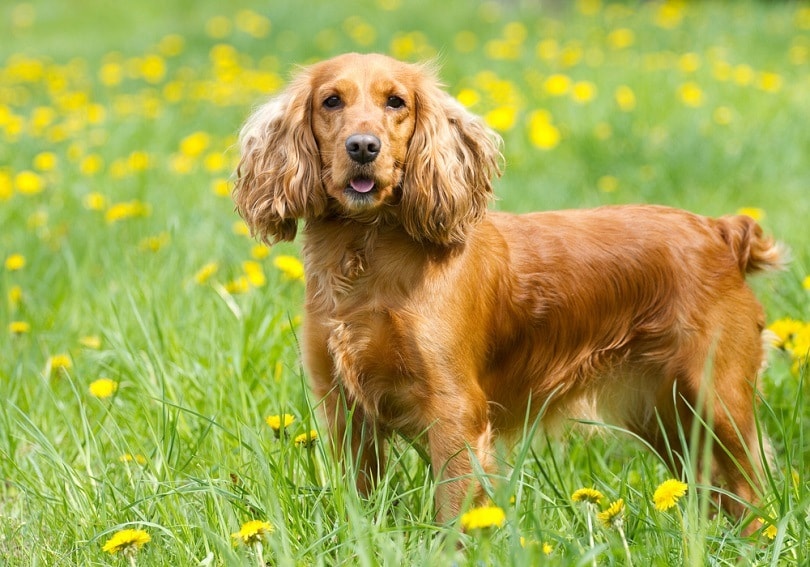What Do You Get With a Pug and a Chicken

Keeping dogs and chickens together may sound strange, but people have been doing it for hundreds of years to protect their birds from wild animals and thieves. If you have chickens and are thinking about getting a dog, you will be glad to know it's quite possible to get the two to cohabitate. However, as you can imagine, there are quite a few things you will need to consider before allowing them to be together. Keep reading while we provide you with a guide to help you safely bring these two animals together.

How To Keep Dogs and Chickens Together
1. Choose the Right Breeds
The Right Dog Breeds
One of the first things you will need to think about when considering bringing dogs and chickens together is what dog breed you are thinking of purchasing. Some breeds have a strong prey drive that will cause them to chase after your chickens, putting them in harm's way. Breeds like the Airedale Terrier and most other terriers will chase your chickens, as will hounds like the Greyhound and Wolfhound. The Doberman, Beagle, and Siberian Husky will also chase your chickens, and any mixed breed with these as a parent will be dangerous.
Most Spaniels, like the Cocker Spaniel, will not attack your chickens. Other breeds that should be safe include the Bulldog, Great Pyrenees, Maltese, Pug, and many others. It's better to select one of these breeds to keep around your chickens. Most will do a fine job of protecting them, and they make great pets.

The Right Chicken Breeds
To a lesser extent, the breed of chicken will also be a part of the puzzle. Some breeds like the Asil, Cornish, Buckeye, and Sumatra are extremely aggressive and might attack your dog. These birds will be challenging to raise alongside a dog. You will need to find a friendlier chicken, like the Austraslorp, Silkies, or Cochin, for a better chance at cohabitation.
2. Train Your Dog
Once you know what breed of dog and chicken you will use, the next step is proper training.
If possible, get your dog used to the chickens at a very early age for the best chance of a long and happy life together. You can still train older dogs, but the process is much easier if you start with a puppy.
Slow Introduction
When you first introduce your dogs to your chickens, you will need to move slowly. It's best if you have already taught your dog a few commands, especially "sit." When you go to your coop in the morning to collect eggs, take your dog with you and have it sit quietly while you do your work so it can get familiar with the scent of the coop. If you finish your work and the dog remains seated, give it a treat and try the next day. If the dog breaks free and tries to chase after the chickens, quickly remove the dog from the pen and try the next day again. After a few tries, your dog should catch on and start getting a treat every day.
Mingling
Once your pet is proficient at the slow introduction, you can move on to the mingling step. In this step, you take the dog into the pen while the chickens roam around the yard. Slowly walk by each one with your dog, and if your pup behaves peacefully, give it a treat. If it starts to bark or chase, yell "No" and remove it from the pen. Try it again the next day until your chicken can make it through the pen without your dog barking. A leash can help you get control of the situation quickly, especially for the first few days.

Summary
It may seem risky, but with plenty of patience and close supervision, you will be able to have your chickens and dog living together happily. You can even train dogs with a strong prey drive, but we recommend getting plenty of experience before giving it a try. We recommend using a leash at first to eliminate danger, but training without it is also important so your dog learns to remain behaved. Using the dog breeds with a low prey drive will be the most successful, as most of them will have little interest in chickens but will still protect them by barking at intruders.
We hope you have enjoyed reading over this guide and found the answer you needed. If we have helped your animals get along, please share this guide to keeping dogs and chickens together on Facebook and Twitter.
Featured Image Credit: Tracey Helmboldt, Shutterstock
Nicole is the proud mom of Baby, a Burmese cat and Rosa, a New Zealand Huntaway. A Canadian expat, Nicole now lives on a lush forest property with her Kiwi husband in New Zealand. She has a strong love for all animals of all shapes and sizes (and particularly loves a good interspecies friendship) and wants to share her animal knowledge and other experts' knowledge with pet lovers across the globe.
Contents
- How To Keep Dogs and Chickens Together
- 1. Choose the Right Breeds
- The Right Dog Breeds
- The Right Chicken Breeds
- 2. Train Your Dog
- Socialization
- Slow Introduction
- Mingling
- 1. Choose the Right Breeds
- Summary
- Related
What Do You Get With a Pug and a Chicken
Source: https://petkeen.com/keeping-dogs-and-chickens-together/